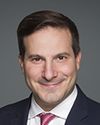Over the last number of years, we have invested close to a billion dollars to support law enforcement through the anti-guns and gangs fund and through our investments into the Canada Border Services Agency.
What does this mean in simple language? This means more resources on the ground. It means more personnel. It means state-of-the-art technology. It means making sure that we're stopping the illegal flow of guns into our country. You heard me cite the numbers: There were 1,100 illegal firearms seized in 2022.
There have been great strides, but the fact is that we have to do more. Supporting law enforcement is one pillar, but we also need to do the prevention work, as I said in my response to Mr. Chiang. Prevention is a pillar that often gets overlooked and does not get the same oxygen and coverage as, let's say, legislation like Bill C-21, but it is a game-changer. It is a game-changing pillar.
What I would say to you is that beyond the scope of this portfolio in Public Safety, the work that our government is doing through the creation of a national housing strategy—providing access to Canadians who are trying to get into their first home by providing more supports for mental health, which my colleague Minister Bennett is leading and shepherding in historic ways—is part of the way in which we can prevent crime. This is because it gets right to those social determinants and those barriers that stand in the way of people who are at risk achieving their full potential and giving back.
I strongly encourage the members of this committee and all parliamentarians, in their study of how we can solve the very difficult problem of gun crime, to also give equal focus and emphasis to addressing prevention. We are doing that, both in my portfolio at Public Safety and equally right across government.





